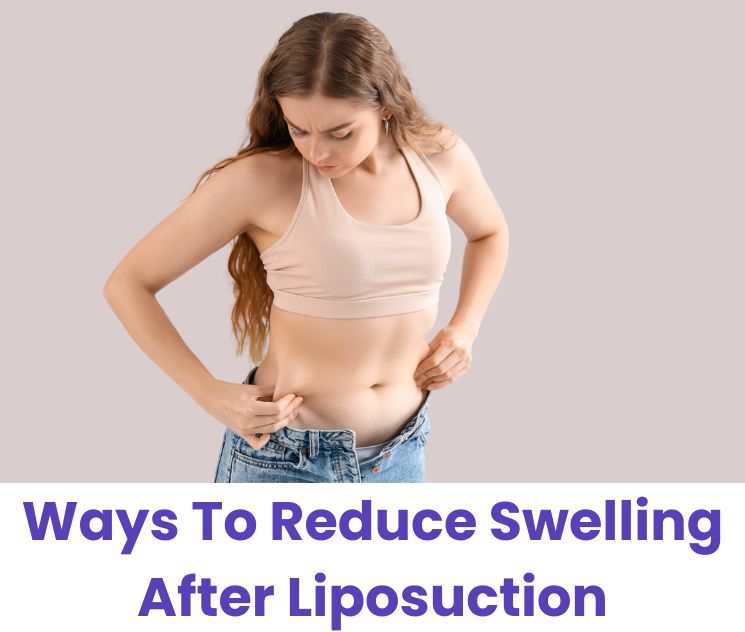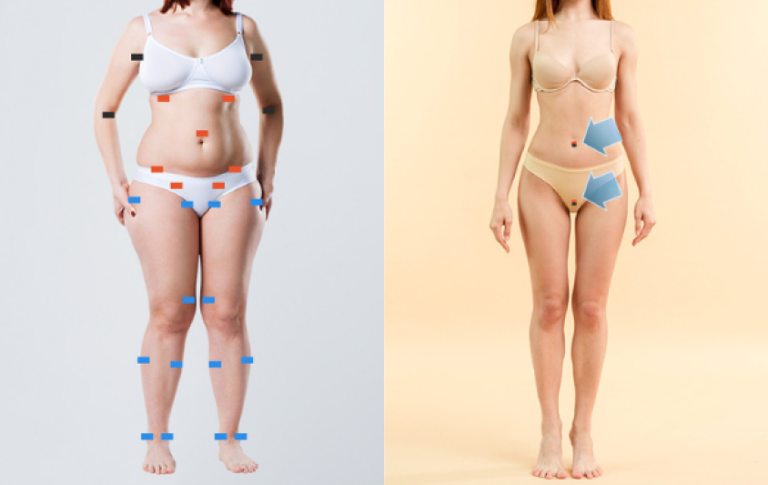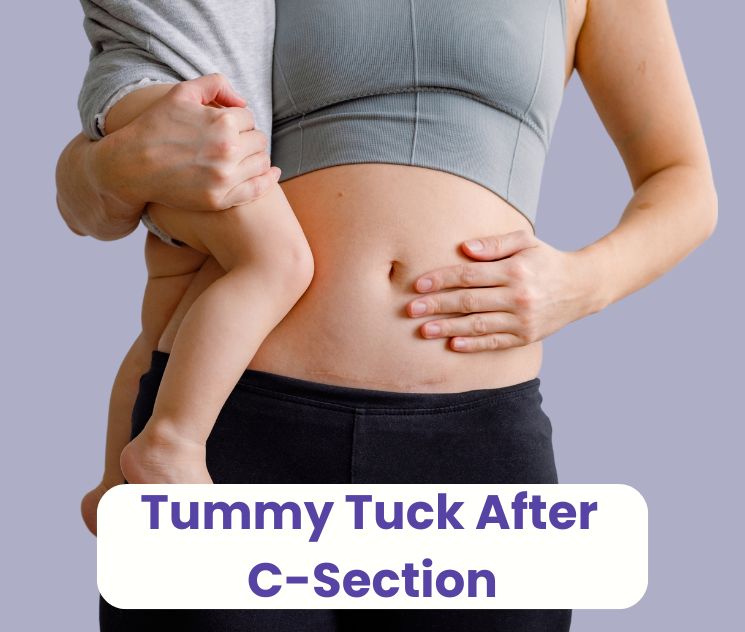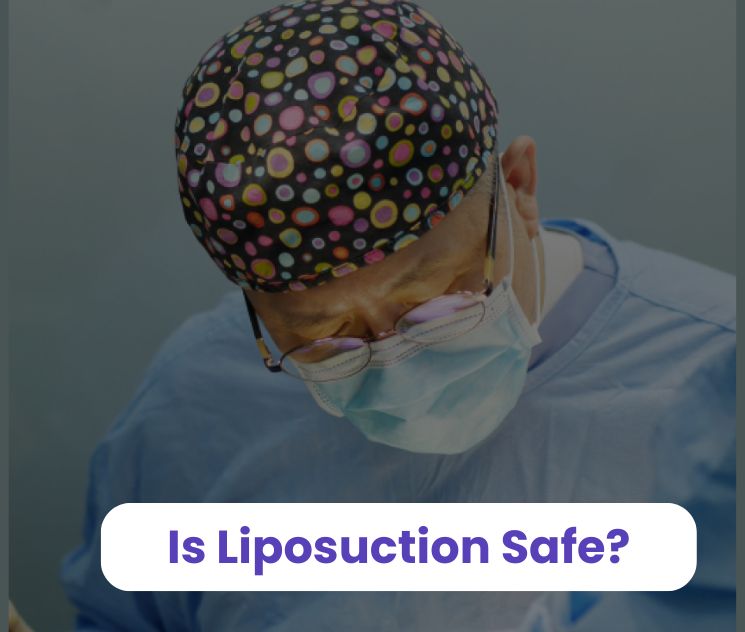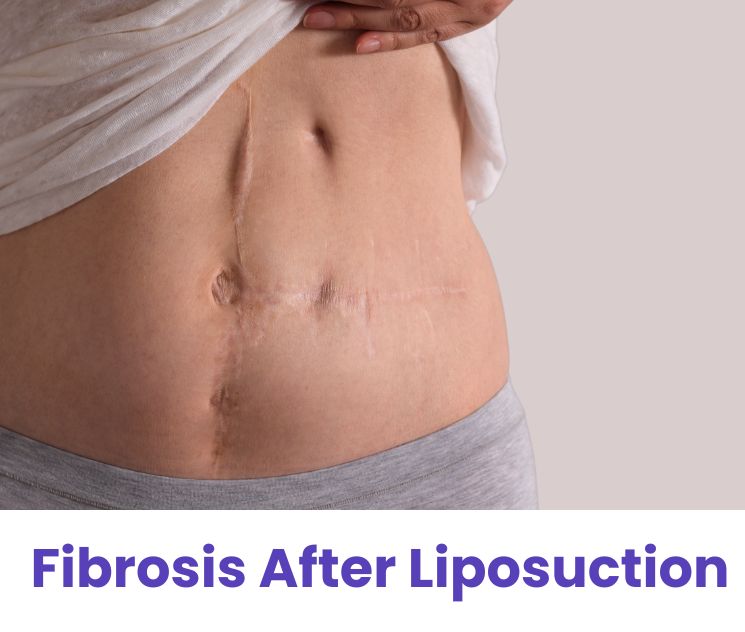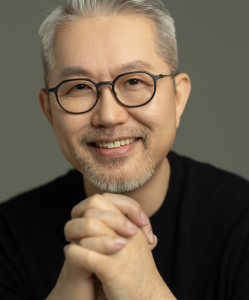Liposuction transforms your body by removing stubborn fat, but swelling after liposuction often steals the spotlight during recovery. You’re not alone if you’re wondering how to reduce swelling after lipo—it’s one of the most common concerns patients have post-surgery.
Swelling is normal after liposuction, but we get it—it can be super frustrating when you’re excited to see your new shape. The good news is that there are ways to manage it! Techniques like wearing compression garments, getting lymphatic massage, and doing gentle movements can help reduce swelling. But if you notice extreme pain or anything unusual, don’t hesitate to reach out to your surgeon. Most of the swelling will go down within 2 to 6 months, so it’s just a matter of being patient and taking care of your body. Just remember, avoiding tight clothing and strenuous exercise is key to giving yourself the best chance at a smooth recovery.
At Lydian Clinic, we understand how important it is to feel comfortable and confident during your recovery after liposuction. With over 20,000 successful procedures performed over the past 20 years under the leadership of Dr Abraham An, we’ve helped countless patients effectively manage swelling and accelerate their healing.
In this guide, we’ll walk you through everything you need to know about swelling after liposuction—why it happens and the best strategies to speed up your recovery.
Contents
- 1 Understanding Swelling After Liposuction
- 1.1 What Are the Ways to Reduce Swelling After Liposuction?
- 1.1.1 1. Rest and Relax
- 1.1.2 2. Use Compression Garments
- 1.1.3 3. Elevate the Treated Area
- 1.1.4 4. Lymphatic Drainage Massage
- 1.1.5 5. Hyperbaric Oxygen Therapy
- 1.1.6 6. Practice Dry Skin Brushing
- 1.1.7 7. Avoid Sports Drinks: Increase Water Intake
- 1.1.8 8. Reduce Salt Intake
- 1.1.9 9. Engage in Gentle Movement and Incorporate a Short Daily Walk
- 1.1.10 10. Consider Prescription Anti-Inflammatory Medicine
- 1.1.11 11. Use Ice Packs on the Affected Areas
- 1.2 What to Avoid After Liposuction?
- 1.2.1 1. Ignoring Instructions
- 1.2.2 2. Strenuous Exercise
- 1.2.3 3. Heat Exposure
- 1.2.4 4. Tight Clothing
- 1.2.5 5. Bathing and Swimming
- 1.2.6 6. Alcohol and Smoking
- 1.2.7 7. Certain Medications and Supplements
- 1.2.8 8. Poor Diet
- 1.2.9 9. Psychological Stress
- 1.2.10 10. Rushing the Recovery Process
- 1.2.11 11. Ignoring Signs of Complications
- 1.2.12 12. Unrealistic Expectations
- 1.3 Self-Care Tips from Lydian
- 1.1 What Are the Ways to Reduce Swelling After Liposuction?
- 2 Ready to Transform Your Body? Choose Lydian for Liposuction
Understanding Swelling After Liposuction
Swelling after liposuction is common and occurs as your body reacts to the surgical process. During liposuction, surgeons create tiny incisions and use a cannula to break up and suction out fat. This process traumatizes your tissues, triggering an inflammatory response. Your body sends fluid to the treated areas to protect and repair them, resulting in swelling from liposuction. Dr. Abraham An further adds that liposuction can damage the body’s lymph vessels and lymph nodes. This can slow down the flow of lymph, which helps remove waste from the body. When this happens, waste can build up and cause problems like swelling.
The swelling usually peaks within the first few days after surgery and then starts to go down gradually over a few weeks. The extent of swelling depends on factors like the size of the treated area, the amount of fat removed, and your healing response.
Most people notice a lot of the swelling going down by the end of the first month. Wearing compression garments can help reduce swelling and support the healing process, and you might be asked to wear them for several weeks.
Full recovery, including the final reduction in swelling, can take up to three to six months. Understanding this process helps you stay calm and proactive as you tackle recovery.
What Are the Ways to Reduce Swelling After Liposuction?
After liposuction, reducing swelling is essential to help your body heal and reveal the best results. Luckily, there are several methods to manage swelling and speed up your recovery. Simple things like getting plenty of rest, wearing compression garments, and staying hydrated can all make a big impact.
But that’s just the start—there are even more strategies you can use to boost your healing process. Below are the most effective ways to reduce swelling after liposuction:

1. Rest and Relax
Rest is crucial for reducing swelling and helping your body heal after liposuction. Taking it easy in the first few days allows your body to recover without additional strain. The more you rest, the less pressure your body has to handle, which can help minimize swelling.
Try to avoid any strenuous activity, as this can make the swelling worse. Getting enough rest gives your body the time it needs to heal properly and helps reduce inflammation. Make sure to listen to your body and take breaks when needed, allowing yourself plenty of time to relax.
2. Use Compression Garments
Using compression garments is an important part of reducing swelling after liposuction. These garments apply gentle pressure to the treated areas, which helps prevent fluid buildup and encourages the body to drain excess fluids.
Wearing garments as recommended by your surgeon supports your skin as it adjusts to its new shape and helps contour your body more evenly.
Dr Abraham An says that compression garments are important to reduce the risk of complications, such as seromas (fluid buildup) and excessive swelling. It’s important to wear the garments for the duration your surgeon advises, usually for several weeks after surgery, to get the best results and promote faster healing.
3. Elevate the Treated Area
Elevating the treated area after liposuction can help reduce swelling and promote better healing. When you lie down, try to raise the treated areas, such as your legs or abdomen, using pillows. This position encourages fluid to drain away from the treated areas and helps minimize swelling.
Elevating the treated area, especially in the first few days after surgery, can also relieve pressure and discomfort. It’s a simple but effective way to support your recovery and make you feel more comfortable during the healing process.
4. Lymphatic Drainage Massage
Lymphatic drainage massage can be a helpful way to reduce swelling after liposuction. This gentle, specialized massage technique stimulates the lymphatic system, encouraging the flow of lymph fluid and helping to reduce fluid retention and swelling in the treated areas. It can also improve circulation, speed up the healing process, and reduce any discomfort you may feel.
Many people find that lymphatic massage promotes faster recovery and smoother results. However, it’s important to wait until your surgeon gives you the go-ahead, typically after a few weeks, before starting these massages.
Make sure to have a trained professional perform the massage to ensure it’s done safely and effectively.
At Lydian, we gently remove waste products from the body through lymphatic hand massage and high-frequency treatment. In particular, this process uses resonance energy with 16 wavelengths instead of 1 wavelength to relieve swelling.
5. Hyperbaric Oxygen Therapy
After surgeries like liposuction or a tummy tuck, blood flow can slow down because the blood vessels become narrow. This can make healing slower and cause more swelling.
Hyperbaric oxygen therapy helps by giving the body a lot of oxygen. This extra oxygen helps new blood vessels grow, improves circulation, and reduces swelling. With better blood flow and less swelling, the body can heal faster, helping you get back to your normal life sooner
6. Practice Dry Skin Brushing
Dry skin brushing is another technique that can help reduce swelling after liposuction. This method involves using a soft, natural bristle brush to gently massage the skin in circular motions, usually starting from your feet and moving upward toward your heart.
Dry skin brushing helps stimulate blood circulation, encourage lymphatic drainage, and exfoliates dead skin cells. By promoting lymphatic flow, it can help reduce fluid retention and swelling in the treated areas. It’s a simple, at-home technique that can be added to your recovery routine, but it’s important to be gentle and avoid brushing over sensitive or swollen areas.
Always check with your surgeon before starting dry brushing to ensure it’s suitable for your recovery stage.
7. Avoid Sports Drinks: Increase Water Intake
After liposuction, it’s important to avoid sports drinks as they can be high in sugar and sodium, which can contribute to fluid retention and increase swelling. Instead, focus on increasing your water intake to help flush out excess fluids and toxins from your body.
Drinking plenty of water helps keep you hydrated, aids in healing, and supports your body’s natural processes to reduce swelling. Aim for at least 8 glasses of water a day, or follow your surgeon’s specific recommendations.
Staying well-hydrated is one of the simplest and most effective ways to support your recovery after liposuction.
8. Reduce Salt Intake
Reducing your salt intake after liposuction is important for minimizing swelling and promoting faster healing. Too much salt can cause your body to retain water, which can increase swelling in the treated areas. To help manage this, try to avoid salty foods like processed snacks, canned soups, and fast food.
Dr Abraham An advises focusing on eating fresh, whole foods and using herbs and spices to flavor your meals. By cutting back on salt, you can help prevent extra fluid buildup and support your body in recovering more efficiently.
9. Engage in Gentle Movement and Incorporate a Short Daily Walk
Engaging in gentle movement and incorporating a short daily walk are great ways to help reduce swelling and support your recovery after liposuction. While you should avoid intense exercise in the initial weeks, light movement like walking improves blood circulation, which helps reduce fluid retention and swelling.
A short walk each day can also prevent stiffness and encourage your body to heal more efficiently.
Dr Abraham An emphasizes starting with short, easy walks, and gradually increase the duration as you feel more comfortable. Always listen to your body and follow your surgeon’s guidance on when it’s safe to begin these gentle activities.
10. Consider Prescription Anti-Inflammatory Medicine
Considering prescription anti-inflammatory medication can help manage swelling and discomfort after liposuction. These medications, typically prescribed by your surgeon, help reduce inflammation, minimize swelling, and relieve pain.
It’s important to follow your surgeon’s instructions on how and when to take the medication to ensure proper healing. Avoid taking over-the-counter anti-inflammatory drugs, such as ibuprofen, unless directed by your doctor, as they may interfere with your recovery process.
Always consult your surgeon before starting any medication to make sure it’s safe and appropriate for your specific recovery needs.
11. Use Ice Packs on the Affected Areas
Using ice packs on the affected areas after liposuction can help reduce swelling and provide relief from discomfort. Applying cold compresses or ice packs to the treated areas helps constrict blood vessels, which reduces inflammation and fluid buildup. It can also numb the area, providing temporary relief from pain.
Be sure to wrap the ice in a cloth or towel to avoid direct contact with your skin, as this can cause frostbite. Apply the ice for about 15–20 minutes at a time, and make sure to take breaks in between to protect your skin.
Always follow your surgeon’s advice on when and how to use ice for the best results.
What to Avoid After Liposuction?
After liposuction, your body needs time to heal, and there are a few things you should avoid to ensure a smooth recovery with less swelling. Whether you’re looking to speed up your healing or avoid complications, steering clear of certain activities and habits can make a huge difference.
From skipping intense exercise to avoiding certain foods, there’s more to know about what to stay away from. Curious to learn what you should avoid to get the best results?
Here are some of the things that you should avoid to reduce swelling:

1. Ignoring Instructions
Ignoring your surgeon’s post-operative instructions can lead to complications, increased swelling, and delayed healing. Following guidelines on compression garments, medications, and activity restrictions is essential for a smooth recovery and optimal results. Always consult your surgeon if unsure.
2. Strenuous Exercise
Avoid intense physical activity for several weeks after liposuction. Strenuous exercise can increase the risk of injuring the treated areas, worsen swelling, and put unnecessary strain on your body, all of which can delay the healing process. Gradually ease back into exercise once your surgeon clears you for activity.
3. Heat Exposure
Avoid hot baths, saunas, or excessive sun exposure after liposuction. Heat can cause blood vessels to expand and increase swelling, irritate the skin, and delay healing. It’s best to wait until your surgeon clears you for heat exposure during recovery.
4. Tight Clothing
Avoid wearing tight or restrictive clothing after liposuction, as it can put pressure on treated areas and interfere with healing. Stick to loose, comfortable clothes for proper blood circulation and wear compression garments as recommended by your surgeon to support recovery.
5. Bathing and Swimming
Avoid soaking in baths, hot tubs, or swimming pools until your surgeon gives you the go-ahead. Water exposure can introduce bacteria, increasing the risk of infection and delaying the healing process.
6. Alcohol and Smoking
Avoid alcohol and smoking after liposuction. Alcohol can dehydrate your body and interfere with healing, while smoking reduces circulation, slowing recovery and increasing the risk of complications. It’s best to refrain until fully healed.
7. Certain Medications and Supplements
Avoid taking medications or supplements, such as blood thinners or vitamin E, without your surgeon’s approval. These can increase the risk of bleeding and interfere with healing. Always consult your doctor before taking anything during recovery.
8. Poor Diet
Avoid a poor diet high in processed foods, salt, and sugar after liposuction. A balanced, nutrient-rich diet helps support healing, reduce swelling, and improve recovery. Focus on whole foods with plenty of vitamins and minerals to aid the healing process.
9. Psychological Stress
Avoid unnecessary stress during your recovery. Stress can negatively impact healing and overall well-being. Focus on relaxation, manage your emotions, and seek support if needed to ensure a smoother recovery process.
10. Rushing the Recovery Process
Avoid rushing your recovery after liposuction. Healing takes time, and pushing yourself too soon can lead to setbacks. Be patient, follow your surgeon’s guidelines, and give your body the time it needs to heal properly.
11. Ignoring Signs of Complications
Don’t ignore unusual symptoms like excessive swelling, pain, redness, or fever after liposuction. These could be signs of infection or other complications. Contact your surgeon immediately if you notice any concerning changes during your recovery.
12. Unrealistic Expectations
Avoid having unrealistic expectations about the results of liposuction. The outcome takes time to appear as swelling reduces, and results may vary. Be patient and understand that your body needs time to heal and adjust after the procedure.
Note: If you experience sudden, worsening swelling, persistent severe pain, redness, warmth, fever, unusual discharge or odors from incisions, or numbness and tingling that doesn’t improve, contact your surgeon immediately. These could be signs of complications that need prompt attention.
Self-Care Tips from Lydian
Worried about aftercare because you live far away?
Don’t worry! At Lydian, we provide clear and detailed instructions to help you take care of yourself at home. By simply following a few important guidelines, you can achieve great results on your own.
Ready to get started? Book a free online consultation today and let us guide you through the process!
Ready to Transform Your Body? Choose Lydian for Liposuction
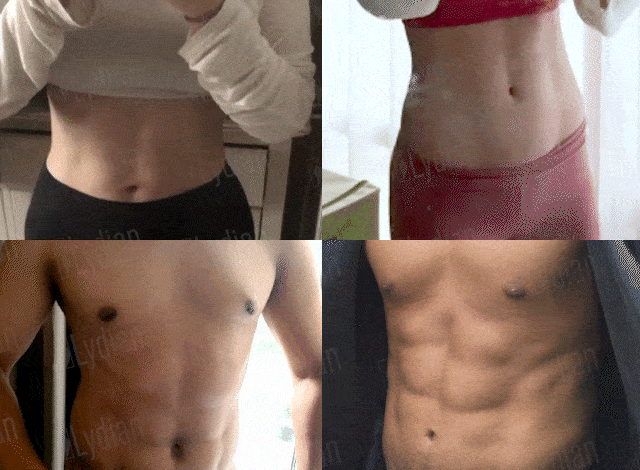
In conclusion, swelling after liposuction is normal but can be uncomfortable. With proper care, like following your surgeon’s advice, wearing compression garments, staying hydrated, and getting light movement, recovery will be smoother.
Most swelling will subside in the next few months, so be patient. Stick to your recovery plan, and you’ll see great results. If something feels off, always reach out to your surgeon. With the right care, you’ll be loving your new look soon!
At Lydian Clinic, we understand that managing post-surgery swelling is just part of your transformation journey. With decades of experience in advanced Liposuction, our team specializes in delivering precise, natural-looking results.
We use the latest techniques and specialized cannulas to minimize scarring and ensure optimal outcomes, helping you feel confident in both the short and long term.
We’re committed to providing you with personalized care throughout your entire recovery process. This starts with a thorough diagnosis and a detailed 3D video consultation to ensure we understand your aesthetic goals. Based on this, we’ll create a customized plan that’s tailored just for you, guiding you through every step of your recovery. Transparency is at the core of everything we do—there are no hidden fees, just honest, clear guidance to help you achieve the results you’ve been dreaming of.
Are you ready to begin your transformation? Reach out to us today to schedule a consultation. I’ll personally review your case and craft a plan designed to fit your unique needs. Let Lydian Clinic be your trusted partner in achieving the confident, sculpted look you desire—contact us now and start your path toward a more beautiful you!
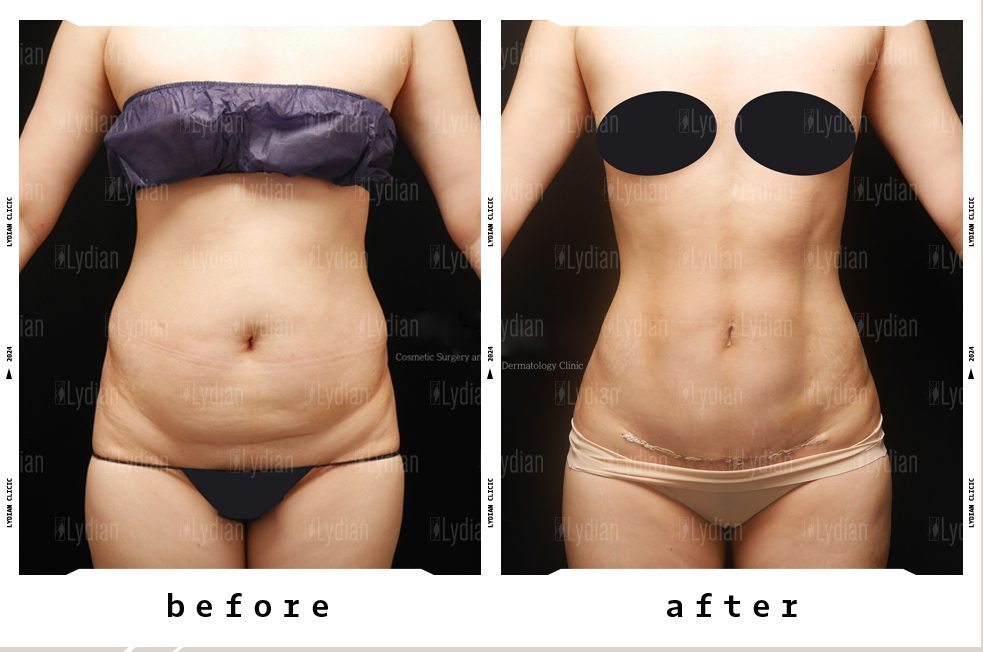


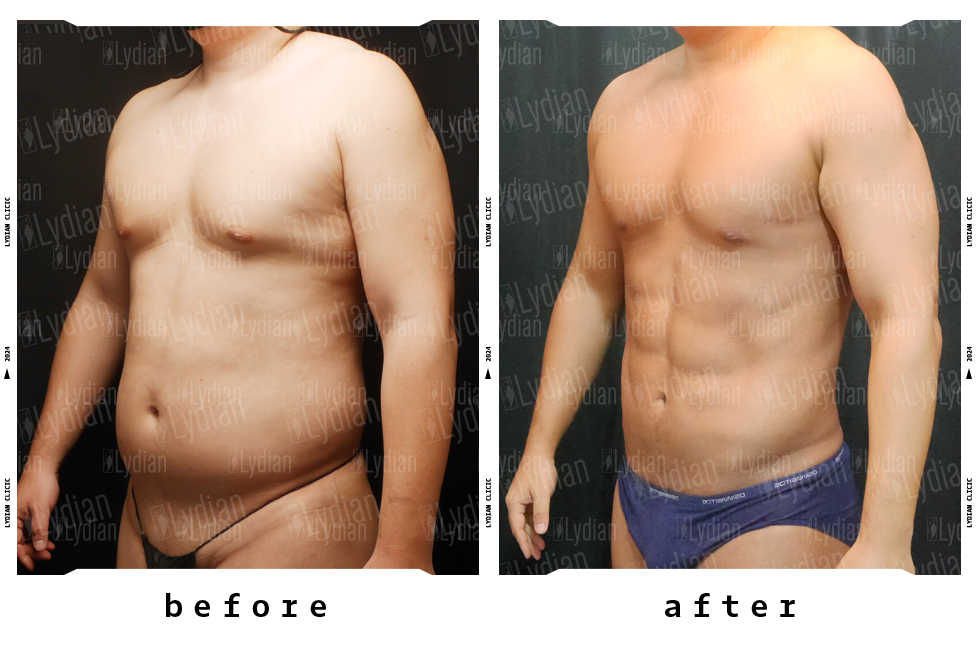










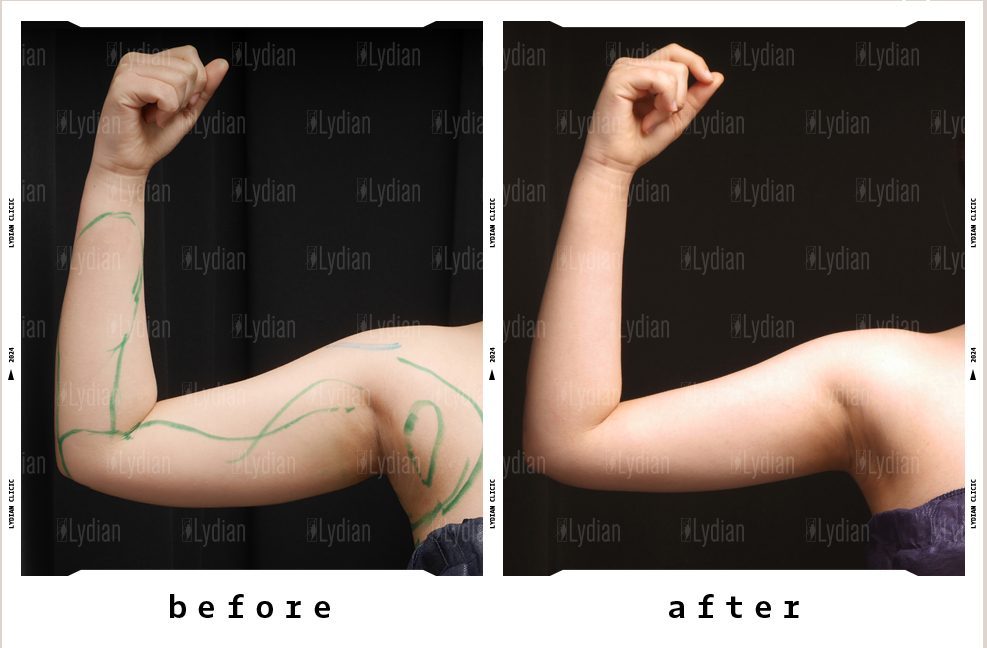
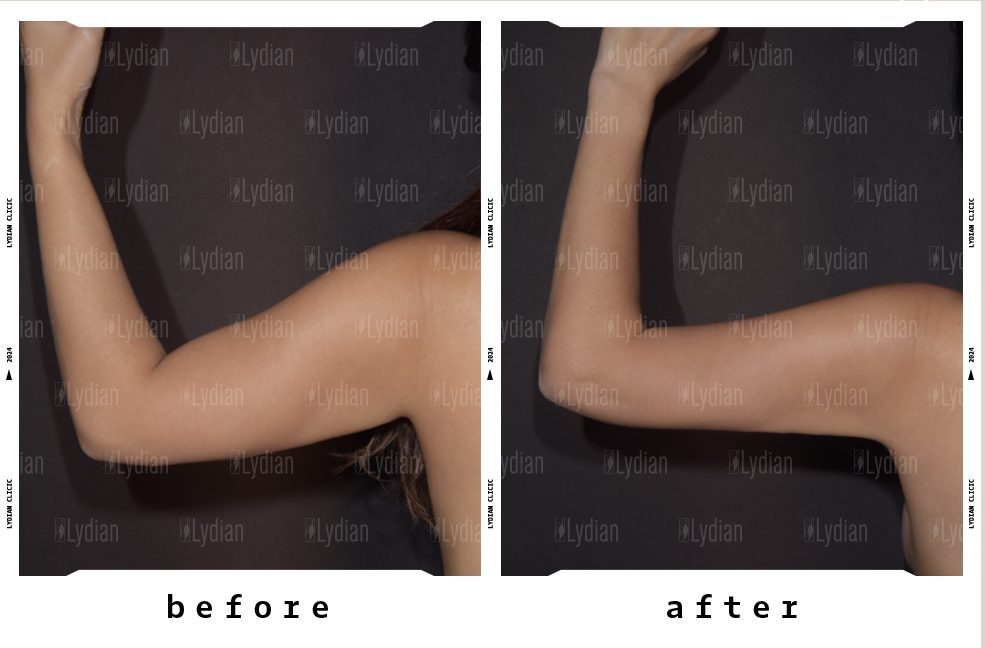
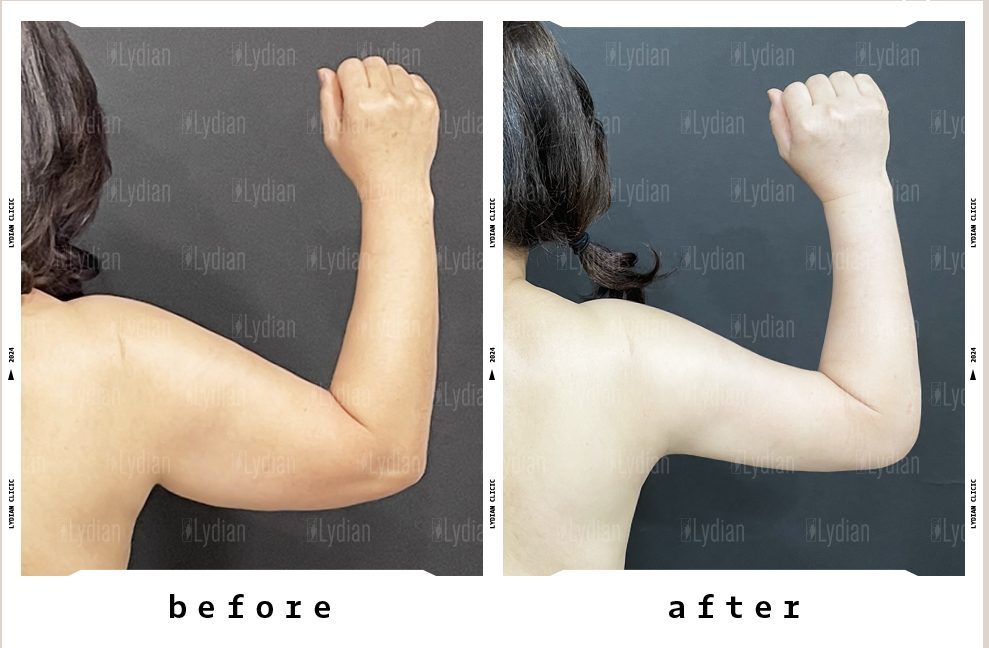

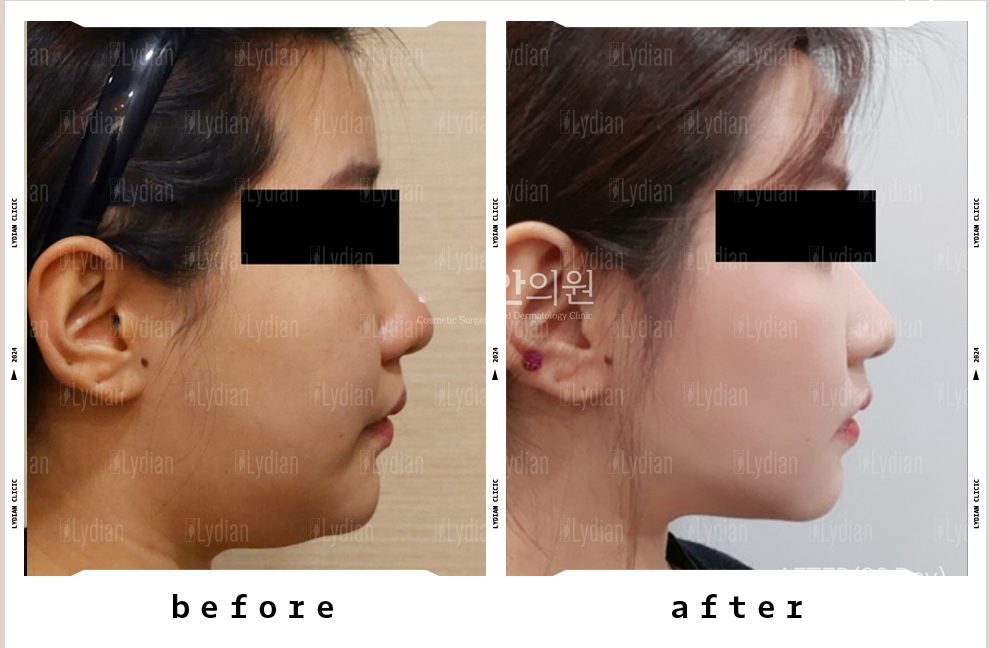

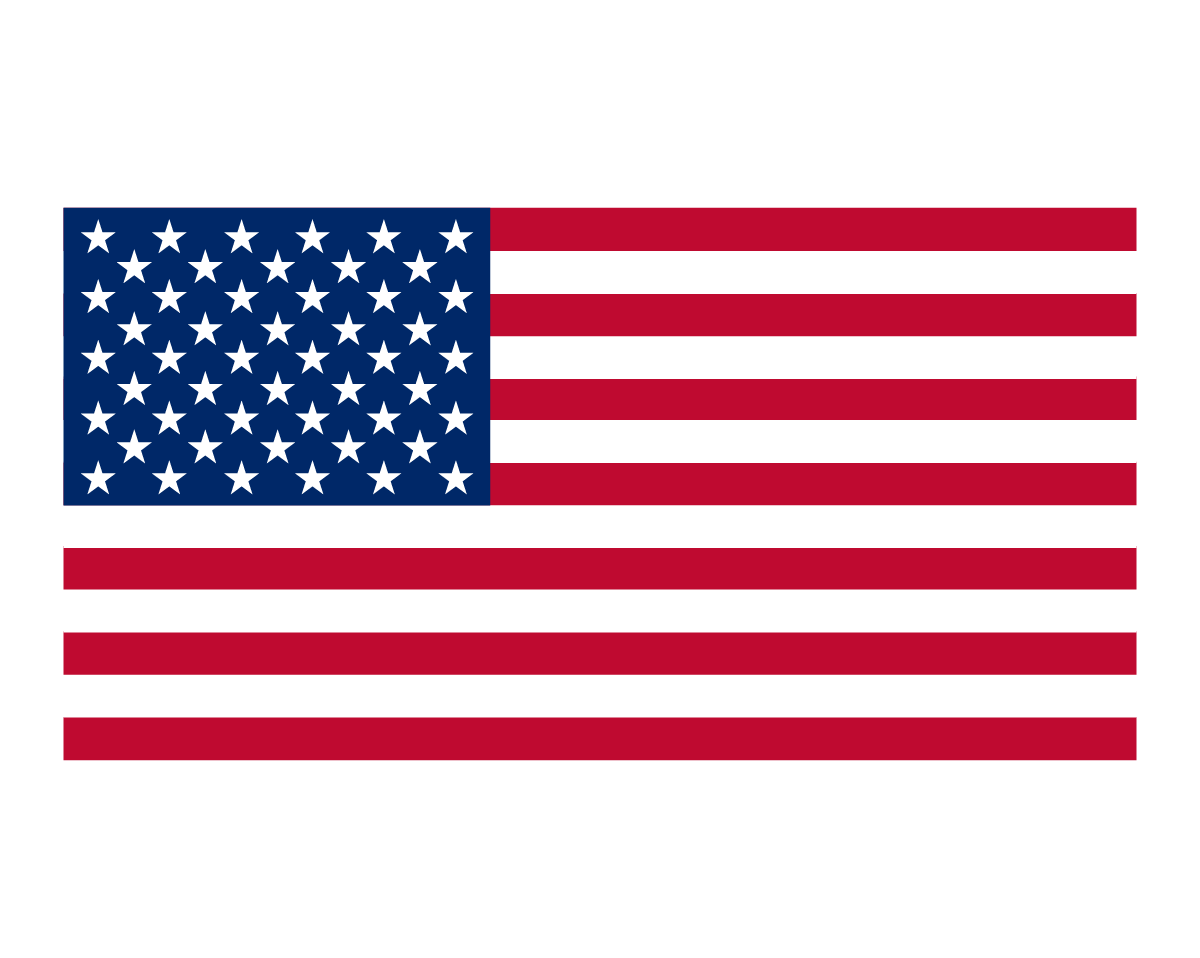 English
English 日本語
日本語 中文网站(繁体)
中文网站(繁体) Русский
Русский Bahasa Indonesia
Bahasa Indonesia ภาษาไทย
ภาษาไทย Tiếng Việt
Tiếng Việt 대한민국
대한민국
